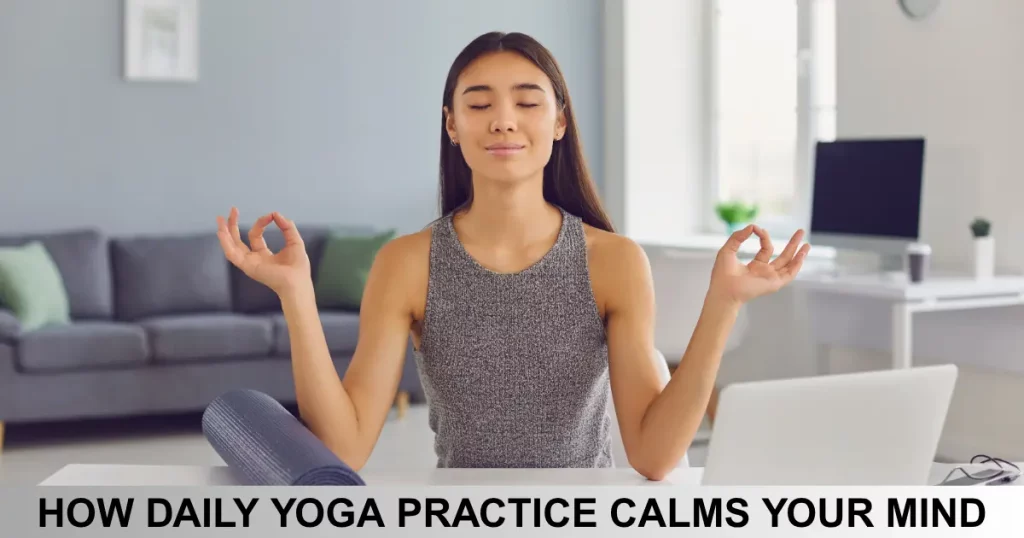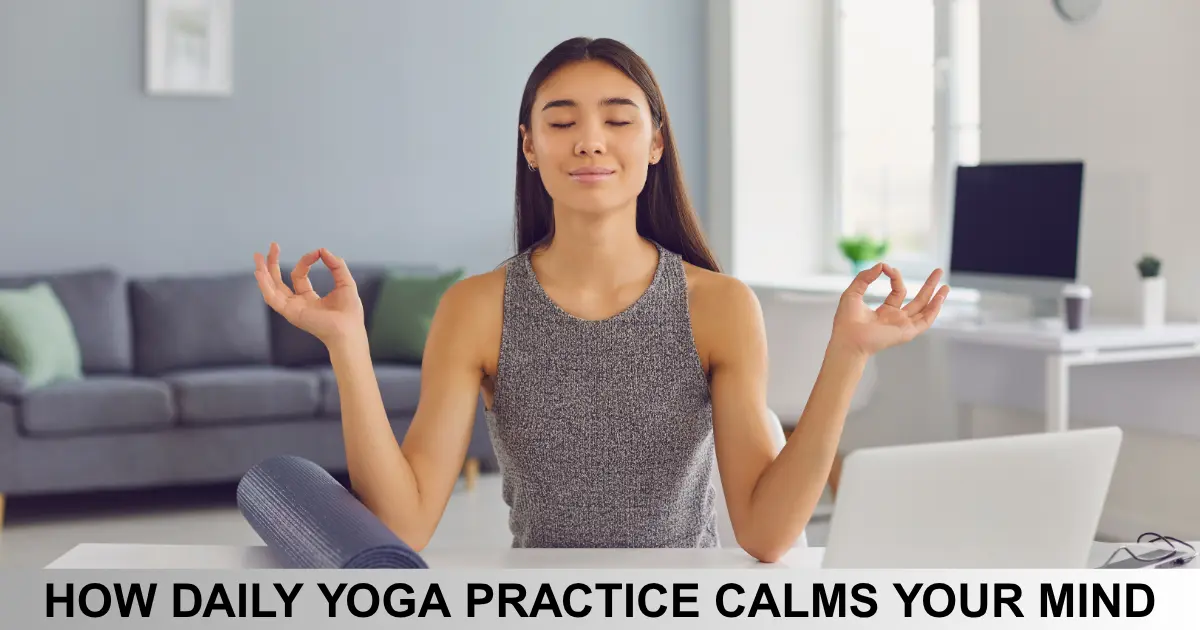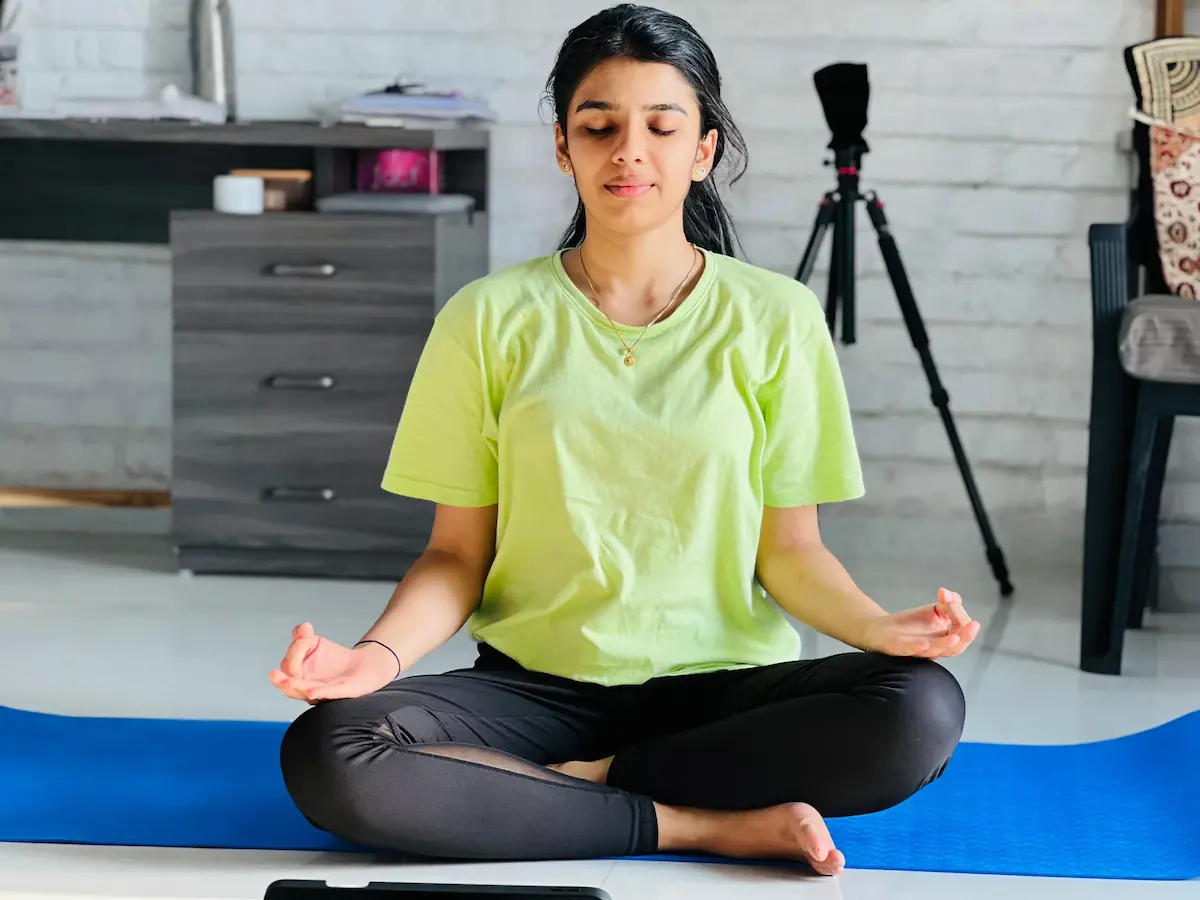Yoga is much more than a physical workout it’s a holistic practice that nurtures your mind, body, and spirit. By incorporating yoga into your daily routine, you can experience greater calm, reduced stress, and a deeper sense of balance.

Step-by-Step Guide
1. Set Your Intention
- Find a quiet space where you won’t be disturbed.
- Take a few deep breaths and ask yourself: What do I want from my practice today? (e.g., calm, energy, clarity)
2. Begin with Breathwork (Pranayama)
- Sit comfortably with your spine straight.
- Inhale deeply through your nose, feeling your belly expand.
- Exhale slowly, letting go of tension.
- Repeat for 2–5 minutes to center your mind and body.
3. Gentle Warm-Up
- Rotate your neck, shoulders, and wrists to release stiffness.
- Stretch your arms overhead and gently twist your torso side to side.
4. Flow Through Simple Yoga Poses
- Move through foundational poses like Cat-Cow, Downward Dog, and Child’s Pose.
- Focus on moving with your breath inhale to expand, exhale to release.
- Hold each pose for 3–5 breaths, noticing any areas of tension.
5. Mindful Body Awareness
- Pay attention to how your body feels in each posture.
- Respect your limits and avoid forcing any movement.
- Use this time to connect with your body and notice subtle changes.
6. Deep Stretch and Tension Release
- Target common stress areas: hips, shoulders, and jaw.
- Hold gentle stretches, such as Seated Forward Fold or Reclined Twist, for 30–60 seconds.
- As you exhale, imagine stress melting away.
7. Guided Relaxation or Meditation
- Lie down in Savasana (Corpse Pose).
- Close your eyes and scan your body from head to toe, relaxing each part.
- Stay here for 5–10 minutes, focusing on your breath or a calming mantra.
8. Carry Yoga Off the Mat
- Bring the calm and awareness from your practice into your daily life.
- Practice kindness, honesty, and self-reflection as outlined in yoga philosophy.
- Why Your Mind Wanders During Meditation
- Beginner Yoga Poses for Stress Relief
- Yoga vs Gym: Which is Better for Mental Health?
Frequently Asked Questions (FAQs)
Q: How long should I practice yoga each day to see benefits?
A: Even 10–20 minutes daily can make a noticeable difference in your mood, flexibility, and stress levels.
Q: Do I need to be flexible to start yoga?
A: No. Yoga meets you where you are. Flexibility develops naturally with regular practice.
Q: Can yoga help with anxiety and overthinking?
A: Yes. Breathwork and mindful movement calm the nervous system and help quiet racing thoughts.
Q: What if I can’t do certain poses?
A: Modify poses as needed or skip them. Listen to your body and focus on what feels good.
Q: Is yoga a spiritual practice?
A: Yoga can be spiritual, but it’s also a practical tool for physical and mental well-being. You can adapt it to your personal beliefs.
Q: How do I stay motivated to practice daily?
A: Set small, achievable goals, track your progress, and remind yourself of how good you feel after practicing.
Yoga is a journey, not a destination. By dedicating a few minutes each day, you can cultivate calm, release tension, and move closer to true inner balance one breath at a time.

